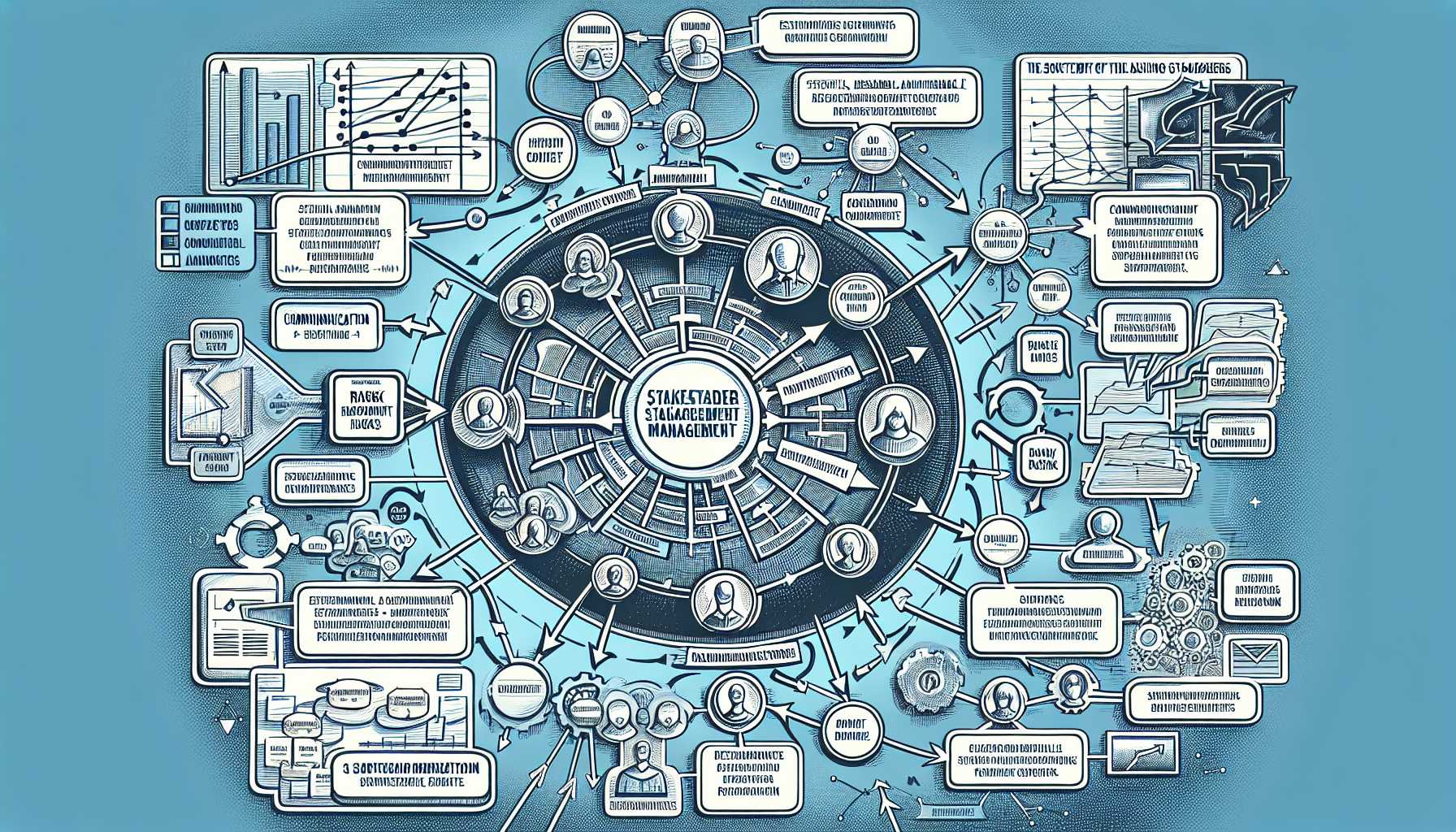Welcome to the complex world of software development, where the success of a project often hinges not just on the technical prowess of the team, but equally on adeptly navigating the maze of stakeholder expectations. As a veteran Product Leader, I’ve learnt that managing these expectations is as essential as managing the product itself. I’m excited to share with you some of the effective strategies and frameworks I’ve incorporated over years of experience in this dynamic field.
The Stakeholder Map – Your Guiding Compass
I want to start by discussing the importance of creating a stakeholder map early in the project lifecycle. This tool has been an invaluable asset in my journey. It helps in identifying all the players influencing or being influenced by your project. In my early days as a product manager, I underestimated this step, focusing primarily on the most vocal stakeholders. It wasn’t long before unseen influences started affecting project outcomes. The stakeholder map is dynamic and should be revisited throughout the development cycle — something I learned the hard way when a silent stakeholder emerged with substantial clout towards the end of a project, disrupting months of work.
Communication: The Pillar of Expectation Management
Effective communication is the cornerstone of managing stakeholder expectations. Transparency can build trust and faith in the product team, which goes a long way in smoothing over potential bumps in the software development road. Using tools like RACI (Responsible, Accountable, Consulted, Informed), I’ve been able to delineate clear communication channels and responsibilities. An instance that comes to mind is when I led a product overhaul for a financial services app. The RACI matrix ensured all relevant stakeholders were updated at each stage, which was crucial in managing expectations when we had to delay the release due to unforeseen security issues.
Frequent and Iterative Feedback Loops
Working with Agile and Scrum methodologies taught me the value of frequent iterations and soliciting feedback at every stage. During one memorable project, we adopted a more flexible sprint system, which allowed us to incorporate stakeholder feedback in real-time and adjust the roadmap accordingly. The result was a product that truly resonated with our users and stakeholders felt heard and involved, reinforcing their confidence in the team.
Setting Realistic Milestones and Managing Scope
One of the trickiest parts of expectation management is controlling project scope. Through my experience, I can’t stress enough the significance of setting SMART (Specific, Measurable, Achievable, Relevant, Time-bound) milestones. Stakeholders often desire the moon, and it’s our job to map a sustainable path to get there—or to explain why it’s not currently feasible. On a project developing a new CRM system, scope creep was a constant threat. By setting and sticking to our SMART milestones, we were able to deliver a streamlined CRM with the most critical features that met the launch date, thereby managing both scope and stakeholder expectations expertly.
Anticipation and Mitigation of Risks
Risk management is a proactive measure to cushion the blow of potential pitfalls at the intersection of development and stakeholder satisfaction. Anticipating the “what ifs” and preparing mitigation strategies in advance has been a key practice in my career. I recall a time when a third-party API we heavily relied on reported an update, potentially disrupting our product’s functionality. By promptly communicating the potential impact to stakeholders and our prepared alternatives, we were able to maintain credibility and control the narrative.
The Power of “No”
Finally, learning when and how to say “No” to stakeholders can be just as important as saying “Yes”. Overpromising is your arch-nemesis; it might bring short-term peace but can destroy long-term trust. Early in my career, I agreed to an impractical feature request to please a key stakeholder. The feature caused innumerable delays and was eventually scrapped. This tough lesson was valuable in understanding the power of setting feasible expectations through assertive communication.
In conclusion, managing stakeholder expectations is an intricate dance. It requires a unique blend of communication, vigilance, and diplomacy skills, punctuated by an unwavering commitment to the product vision. Through my journeys across complex software landscapes, I’ve learned to orchestrate these factors to create harmony between developers and stakeholders, ensuring a satisfying experience for everyone involved.

